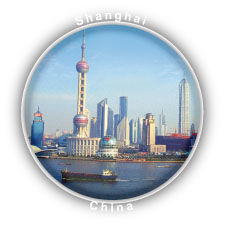Vision/Is Your Company Ready for the 21st Century Shift?
 As the information-enabled Knowledge Economy unfolds, the drivers of competitive advantage are shifting under the feet of global enterprises, significantly elevating risk and reward: As the information-enabled Knowledge Economy unfolds, the drivers of competitive advantage are shifting under the feet of global enterprises, significantly elevating risk and reward:
- Demand: Growth for many products and services is shifting to Asia, which will accelerate as markets mobilize. China is already the #3 market for luxury goods. Emerging markets will have their distinct ways and attitudes toward consumption.
- Supply: Incumbents are increasingly under fire from new global competitors whose structures are different, so they often don't have to play by the same rules.
- Value: Hyper-available information drives commoditization: customers consume differentiation quickly while competitors copy it. Short life cycles demand more innovation.
- Power: Producers have had the upper hand due to their control of information and resources; today, consumer empowerment is increasing, and winners will cater to their diverse demands.
- Organization: The 21st century enterprise will have a networked, collaborative structure to enable it to achieve unprecedented adaptiveness and innovation.
Three drivers that may call for transformation
- When you struggle to meet customers' volatile needs—and competitors' innovations. Information-enabled customers and competitors demand unprecedented responsiveness. Product life cycles shrink constantly, eroding product R&D investments.
- When you rely on M&A to build capabilities. Creating synergy and the ability to innovate are cornerstones of strategy; however, mergers are notorious for destroying more value than they create.
- When you don't have a clear idea about how to engage emerging markets. China's growth is already legendary, and India is growing in stealth mode. Yet, these customers have beliefs and lifestyles that put your products in a completely different context.
Assessing the case for action
Tectonic trends like the 21st Century Shift catch many leaders by surprise because they are accustomed to comparing their performance with that of their traditional peers. However, the fact that profound changes are afoot in supply (new competitors with new business models) and demand (new customers) should suggest the risk that complacency brings as well as the potential reward for early movers. Moreover, the Industrial Economy's key value lever, efficiency, is becoming less relevant every year as a differentiator.
| Perhaps the greatest risk is carrying on business as usual. |
|



 As the information-enabled Knowledge Economy unfolds, the drivers of competitive advantage are shifting under the feet of global enterprises, significantly elevating risk and reward:
As the information-enabled Knowledge Economy unfolds, the drivers of competitive advantage are shifting under the feet of global enterprises, significantly elevating risk and reward: